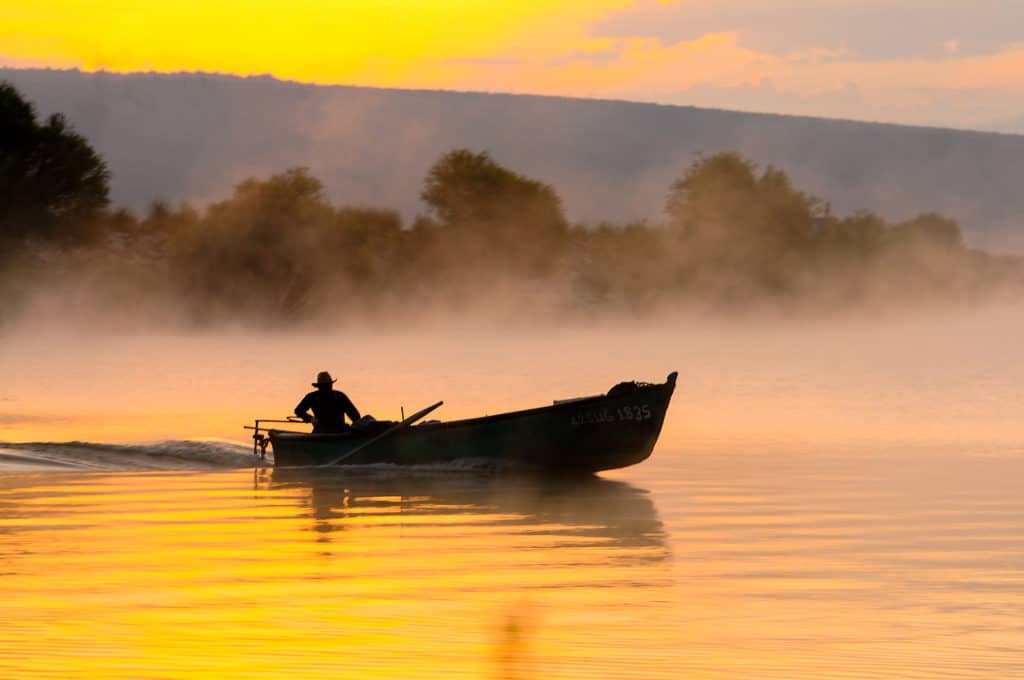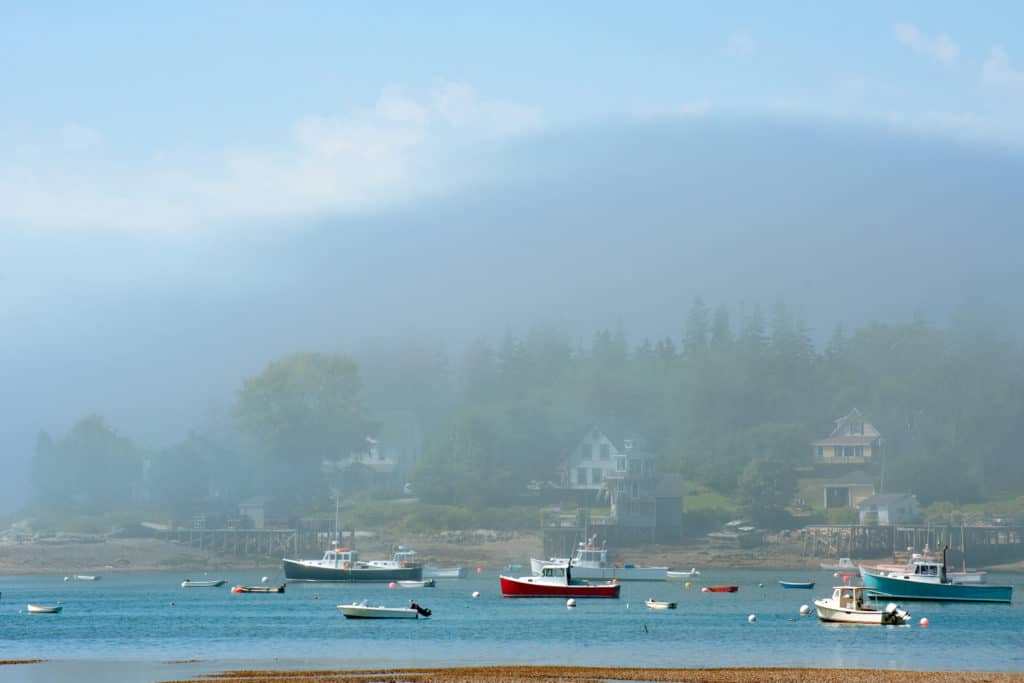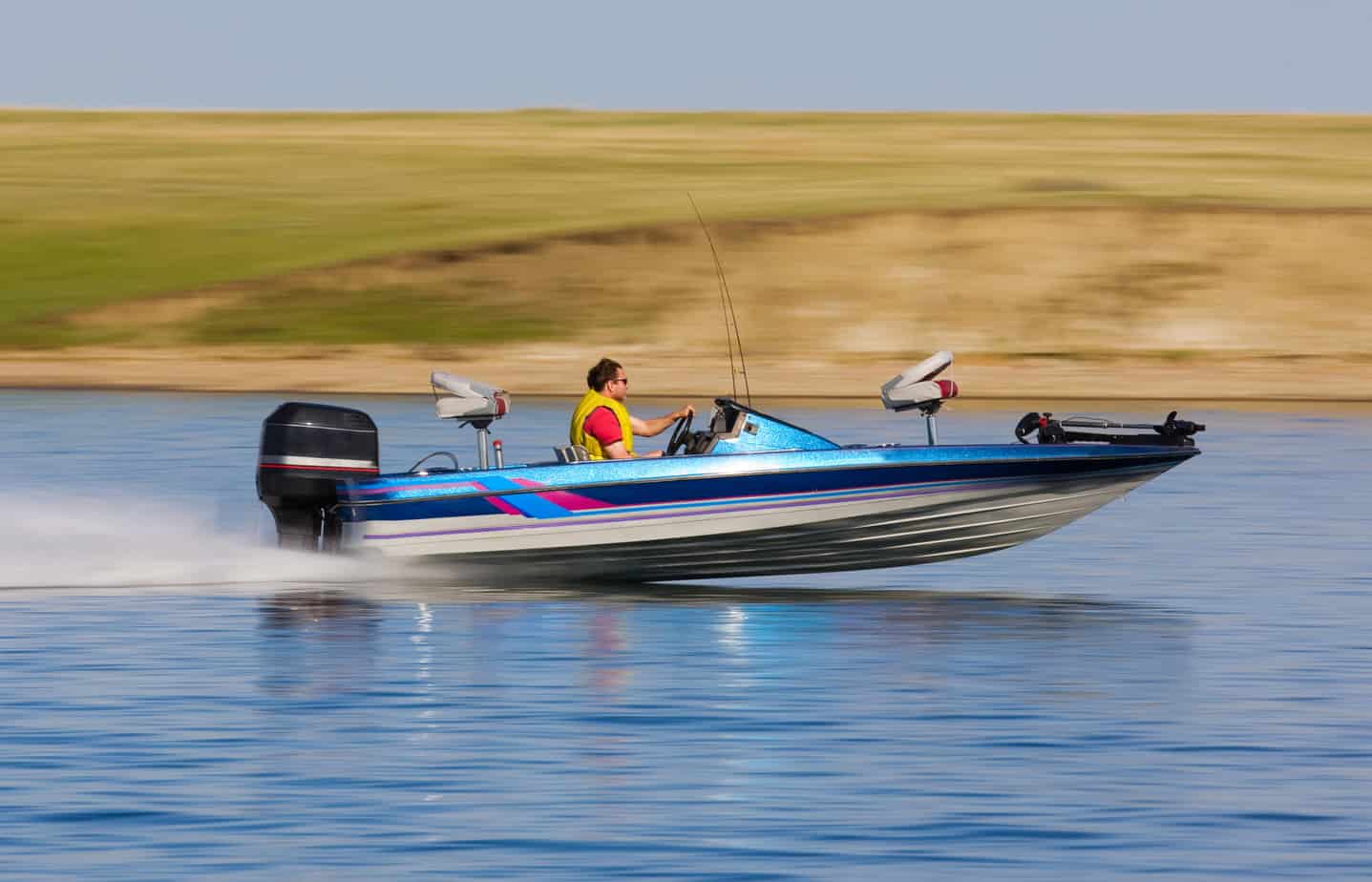Passing a fishing boat can be tricky and requires a little bit of skill and know-how.
As a result, we are often asked about how should you pass a fishing boat.
The answer is that it depends on the situation and your level of experience as a boater.
Passing a boat is something that all fishermen should know how to do, but there are certain times when it’s better not to pass one at all.
In this blog post, we’ll discuss preparing for passing a fishing boat safely, avoiding common mistakes while passing them, strategies for navigating tight spaces with multiple boats around you, and knowing when it’s best not to attempt any type of pass.
So if you’re asking yourself “should I pass this fishing boat?”, then read on!
Preparing to Pass a Fishing Boat
When preparing to pass a fishing boat, it is important to assess the situation and determine the best course of action.
This includes understanding navigation rules and regulations, communicating with other boaters, and determining the safest speed and distance for passing.
Assessing the Situation
Before attempting to pass a fishing boat, take time to observe your surroundings.
Pay attention to any obstacles or hazards that may be present in order to plan an appropriate route around them.
Also consider factors such as weather conditions, visibility, traffic density, water depth, and bottom composition when assessing the situation.
Determining the Best Course of Action
Once you have assessed your surroundings, decide on which direction will provide you with enough space for safe passage while minimizing the risk of collision or damage.
When possible choose a path that allows you more room for maneuvering should something unexpected occur during your attempt.
Additionally, make sure that all navigational aids are clearly visible before beginning your maneuver so that you can avoid running aground or hitting submerged objects.
When passing another vessel there may be times when you need to communicate with them to ensure everyone’s safety throughout this process.
If necessary, use visual signals such as hand gestures or flags in addition to verbal communication via VHF radio channels 16 and 22A.
Make sure both vessels are aware of each other’s intentions before proceeding so there is no confusion about who has the right-of-way at any given moment during transit.
By following the proper steps for assessing the situation, determining the best course of action, and communicating with other boaters, you can ensure that passing a fishing boat is done safely.
Now let’s look at how to actually pass a fishing boat in a safe manner.
Passing a Fishing Boat Safely
When passing a fishing boat, it is essential to maintain a safe speed and distance, stay alert and aware of your surroundings, and follow all navigation rules and regulations.
It is also important to communicate with other boaters in order to ensure everyone’s safety.
Maintaining a Safe Speed and Distance
When passing another vessel on the water, it is important to slow down enough so that you can safely pass without causing any excessive disruption.
The best way to do this is by maintaining a safe speed relative to the size of the boat you are passing as well as its current location.
Additionally, make sure that there is plenty of space between your boat and the one you are passing; this will help reduce any risk of collision or disruption from waves created by either vessel.
Staying Alert and Aware of Surroundings

It’s also important for boaters who are attempting passes near fishing boats to remain vigilant about their surroundings at all times.
This means keeping an eye out for potential hazards such as shallow waters or submerged objects that could cause problems during maneuvers like these.
Additionally, be mindful of other vessels in the area—particularly those which may be engaged in activities like trolling or casting nets—as they can pose additional risks when making passes near them.
Finally, when making passes near fishing boats it is critical that all navigational rules and regulations are followed at all times.
Not only will this help keep everyone safe, but it will also prevent fines from being issued due to violations that could have been avoided with proper planning ahead of time.
Make sure that you understand local laws regarding right-of-way before attempting any type of maneuver around another vessel; additionally, check for signs posted along waterways indicating special restrictions which may apply in certain areas such as no wake zones.
When passing a fishing boat, it is important to stay alert and aware of your surroundings, maintain a safe speed and distance, follow all navigation rules and regulations, and communicate with other boaters properly.
Knowing these tips will help you avoid common mistakes when passing a fishing boat.
Avoiding Common Mistakes When Passing a Fishing Boat
Not slowing down enough or too much is one mistake that should be avoided.
It is essential to maintain an appropriate speed and distance when approaching another vessel in order to ensure safe passage for all involved.
Additionally, not giving adequate space for passing maneuvers can also create hazardous conditions on the water.
Boaters should always allow plenty of room between their vessel and the other boat before attempting any maneuvering around them.
Finally, failing to communicate with other boaters properly can result in confusion and potential danger on the waterway.
Before making any passes, it’s important for boaters to make sure they are communicating clearly with those around them so everyone knows what’s happening and where they need to go next.
This includes using proper hand signals if necessary as well as speaking loudly enough so others can hear you over engine noise or windy conditions.
By following these guidelines and avoiding common mistakes when passing a fishing boat, boaters will help ensure safe navigation for themselves as well as others out on the waterway.
Knowing how best to approach another vessel in tight spaces will help keep everyone safe while still allowing them time out on the open waters enjoying their favorite pastime activities.
Now let’s look at strategies for passing fishing boats in tight spaces.
Strategies for Passing Fishing Boats in Tight Spaces
When passing fishing boats in tight spaces, it is important to utilize slow-speed zones when possible.
Slow-speed zones are areas where the speed limit is reduced to a maximum of 5 knots (5.75 mph) or less.
This helps reduce the risk of collision and allows for more time for boaters to assess their situation and make decisions about how best to pass each other safely.
Planning ahead is also key when attempting to pass a fishing boat in tight spaces.
Boaters should take into account the size of their vessel, as well as any potential obstacles that may be present such as rocks, buoys, or shallow water areas.
By planning ahead and assessing the situation before beginning a maneuver, boaters can avoid unnecessary risky maneuvers which could put them in danger.
Finally, being patient and taking your time when necessary is essential when passing fishing boats in tight spaces.
It’s important not to rush through a maneuver just because you feel like you have enough room; always remember that safety comes first.
Taking your time will help ensure that everyone remains safe during the maneuver while still allowing you to get where you need to go without incident.
When it comes to passing fishing boats in tight spaces, it’s important to understand the risks and plan ahead.
Knowing when it’s better not to pass a fishing boat is just as important for staying safe on the water.
Knowing When It’s Better Not to Pass a Fishing Boat
It is important to understand the risks involved and know when it’s better not to pass a fishing boat.
Recognizing Unsafe Conditions or Situations

Before attempting to pass a fishing boat, you should assess the situation and look out for any potential hazards that could make passing unsafe.
If visibility is poor due to fog, rain, or darkness, it may be best not to attempt a pass at all.
Additionally, if there are other boats in the area or if the waters are particularly crowded with vessels of all sizes, it may be safer to choose an alternative route rather than risk getting too close while making your pass.
Understanding the Risks Involved in Making a Pass
When attempting to pass another vessel on open water—especially one that is actively engaged in fishing—it is important to maintain both speed and distance from them so as not to disrupt their activity or cause any harm.
This means keeping your speed slow enough that you can react quickly if necessary but fast enough that you don’t get stuck behind them for too long.
You also need sufficient space between yourself and the other vessel so as not to create dangerous wakes which could interfere with their activities or put them at risk of capsizing their craft.
Choosing an Alternative Route When Appropriate
In some cases, such as when navigating narrow channels where two-way traffic must share limited space, it may simply be impossible (or unwise)to attempt to pass another vessel safely without causing disruption or putting yourself at risk of collision with another craft nearby.
In these instances, it’s best just to find an alternate route around them by either taking advantage of slower speed zones when available or waiting until they have cleared out before proceeding forward on your own course again.
When deciding whether or not to attempt passing a fishing boat, always remember safety should be your top priority.
Make sure conditions are favorable and take into account factors such as visibility and congestion levels before making any decisions about how best to proceed forward on your journey.
FAQs
How should you pass a fishing boat with minimum wake?
To do this, approach the other boat at an angle of 45 degrees or more, then slow down to no-wake speed as you pass them.
Be sure to keep an eye out for any obstacles in the water that could cause turbulence and further increase the wake.
Finally, when you have passed them safely, gradually accelerate back up to cruising speed while keeping an eye on both boats’ wakes until they have dissipated completely.
On what side do you pass a boat on the water?
When operating a boat on the water, it is important to remember to always pass other boats on their starboard (right) side.
This is known as the “starboard-to-starboard” rule and helps ensure that all boaters remain safe while out on the water.
It also allows for more efficient navigation of busy waterways and helps prevent collisions between vessels.
Always be sure to check your surroundings before passing another vessel, maintain a safe speed, and use appropriate signals when necessary.
Why should boaters slow down while passing recreational fishing boats?
Boaters should slow down while passing recreational fishing boats for several reasons.
First, it is important to be respectful of other boaters and their activities.
Slowing down allows you to maintain a safe distance from the boat and its occupants.
Additionally, slowing down reduces the risk of creating large wakes that can disrupt anglers’ lines or scare away fish in the area.
Finally, it is simply courteous to show respect for those who are out enjoying nature on the water.
Conclusion
It’s important to know when it is safe and appropriate to pass a fishing boat and when it is better not to.
By following the tips outlined in this article, you should have no problem safely navigating your way around other boats on the water.
Remember that safety always comes first – so if you ever find yourself questioning whether or not you should pass a fishing boat, err on the side of caution and wait for another opportunity.
Are you out on the lake, trying to figure out how to pass a fishing boat? Don’t worry! Jack Outdoors is here with all the tips and tricks you need.
Our team of experts has decades of experience in hunting and fishing that can help guide your journey.
Learn from our extensive knowledge base about what it takes to properly navigate any waters when passing another vessel safely and securely.

